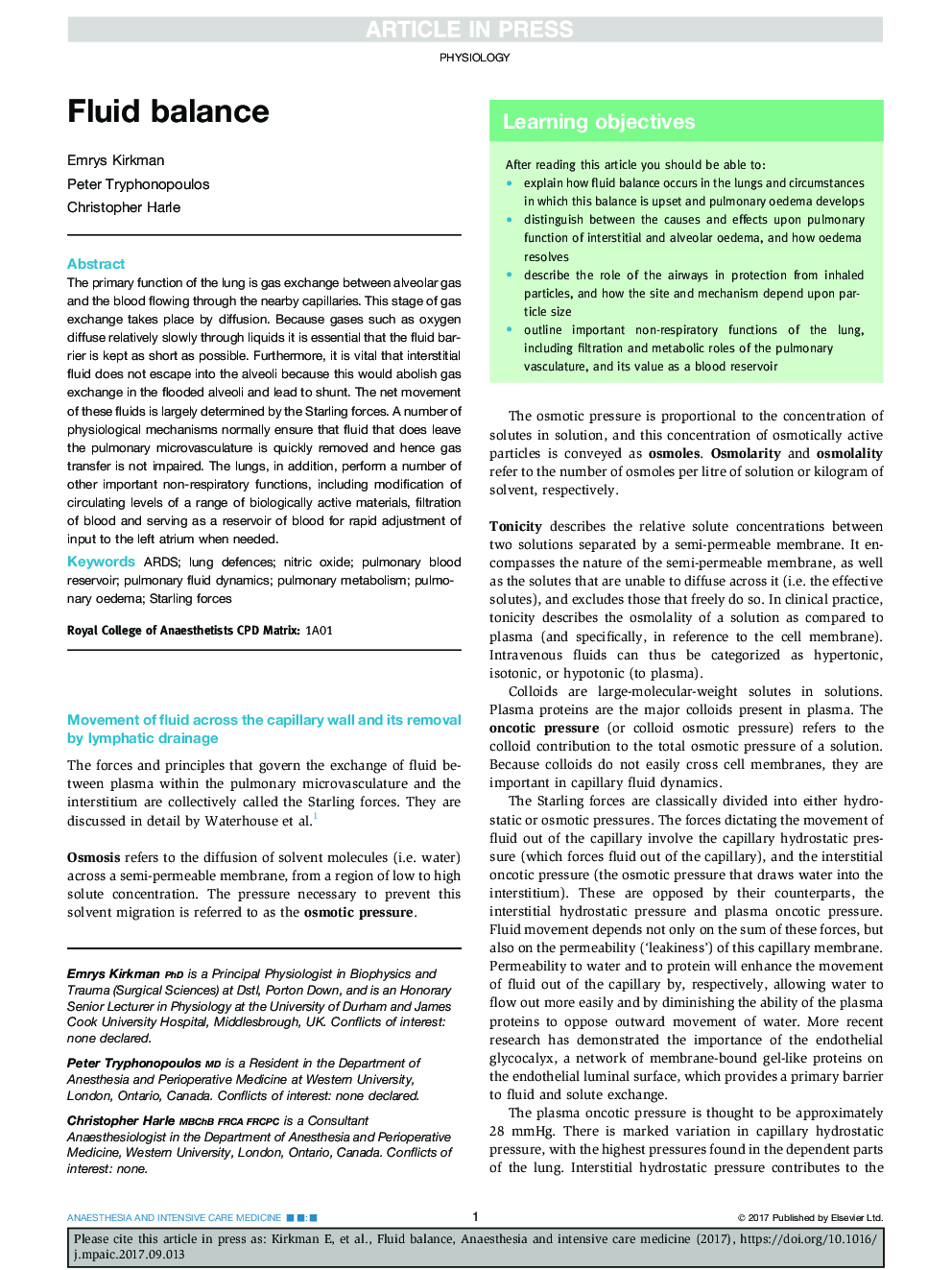| Article ID | Journal | Published Year | Pages | File Type |
|---|---|---|---|---|
| 8610201 | Anaesthesia & Intensive Care Medicine | 2017 | 4 Pages |
Abstract
The primary function of the lung is gas exchange between alveolar gas and the blood flowing through the nearby capillaries. This stage of gas exchange takes place by diffusion. Because gases such as oxygen diffuse relatively slowly through liquids it is essential that the fluid barrier is kept as short as possible. Furthermore, it is vital that interstitial fluid does not escape into the alveoli because this would abolish gas exchange in the flooded alveoli and lead to shunt. The net movement of these fluids is largely determined by the Starling forces. A number of physiological mechanisms normally ensure that fluid that does leave the pulmonary microvasculature is quickly removed and hence gas transfer is not impaired. The lungs, in addition, perform a number of other important non-respiratory functions, including modification of circulating levels of a range of biologically active materials, filtration of blood and serving as a reservoir of blood for rapid adjustment of input to the left atrium when needed.
Related Topics
Health Sciences
Medicine and Dentistry
Anesthesiology and Pain Medicine
Authors
Emrys Kirkman, Peter Tryphonopoulos, Christopher Harle,
